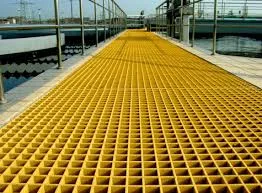
-
 Afrikaans
Afrikaans -
 Albanian
Albanian -
 Amharic
Amharic -
 Arabic
Arabic -
 Armenian
Armenian -
 Azerbaijani
Azerbaijani -
 Basque
Basque -
 Belarusian
Belarusian -
 Bengali
Bengali -
 Bosnian
Bosnian -
 Bulgarian
Bulgarian -
 Catalan
Catalan -
 Cebuano
Cebuano -
 China
China -
 China (Taiwan)
China (Taiwan) -
 Corsican
Corsican -
 Croatian
Croatian -
 Czech
Czech -
 Danish
Danish -
 Dutch
Dutch -
 English
English -
 Esperanto
Esperanto -
 Estonian
Estonian -
 Finnish
Finnish -
 French
French -
 Frisian
Frisian -
 Galician
Galician -
 Georgian
Georgian -
 German
German -
 Greek
Greek -
 Gujarati
Gujarati -
 Haitian Creole
Haitian Creole -
 hausa
hausa -
 hawaiian
hawaiian -
 Hebrew
Hebrew -
 Hindi
Hindi -
 Miao
Miao -
 Hungarian
Hungarian -
 Icelandic
Icelandic -
 igbo
igbo -
 Indonesian
Indonesian -
 irish
irish -
 Italian
Italian -
 Japanese
Japanese -
 Javanese
Javanese -
 Kannada
Kannada -
 kazakh
kazakh -
 Khmer
Khmer -
 Rwandese
Rwandese -
 Korean
Korean -
 Kurdish
Kurdish -
 Kyrgyz
Kyrgyz -
 Lao
Lao -
 Latin
Latin -
 Latvian
Latvian -
 Lithuanian
Lithuanian -
 Luxembourgish
Luxembourgish -
 Macedonian
Macedonian -
 Malgashi
Malgashi -
 Malay
Malay -
 Malayalam
Malayalam -
 Maltese
Maltese -
 Maori
Maori -
 Marathi
Marathi -
 Mongolian
Mongolian -
 Myanmar
Myanmar -
 Nepali
Nepali -
 Norwegian
Norwegian -
 Norwegian
Norwegian -
 Occitan
Occitan -
 Pashto
Pashto -
 Persian
Persian -
 Polish
Polish -
 Portuguese
Portuguese -
 Punjabi
Punjabi -
 Romanian
Romanian -
 Russian
Russian -
 Samoan
Samoan -
 Scottish Gaelic
Scottish Gaelic -
 Serbian
Serbian -
 Sesotho
Sesotho -
 Shona
Shona -
 Sindhi
Sindhi -
 Sinhala
Sinhala -
 Slovak
Slovak -
 Slovenian
Slovenian -
 Somali
Somali -
 Spanish
Spanish -
 Sundanese
Sundanese -
 Swahili
Swahili -
 Swedish
Swedish -
 Tagalog
Tagalog -
 Tajik
Tajik -
 Tamil
Tamil -
 Tatar
Tatar -
 Telugu
Telugu -
 Thai
Thai -
 Turkish
Turkish -
 Turkmen
Turkmen -
 Ukrainian
Ukrainian -
 Urdu
Urdu -
 Uighur
Uighur -
 Uzbek
Uzbek -
 Vietnamese
Vietnamese -
 Welsh
Welsh -
 Bantu
Bantu -
 Yiddish
Yiddish -
 Yoruba
Yoruba -
 Zulu
Zulu
Exploring the Benefits of FRP Dual Layer Composite Materials for Enhanced Performance
Understanding FRP Dual Layer Composite Products
Fiber Reinforced Polymer (FRP) materials have transformed various industries with their superior strength-to-weight ratios, corrosion resistance, and design flexibility. One exciting advancement in this domain is the development of FRP dual layer composite products. These materials combine the benefits of fiber reinforcement with a unique layered structure, resulting in innovative solutions for engineering challenges across multiple sectors.
What is FRP?
FRP consists of a polymer matrix reinforced with fibers, typically glass, carbon, or aramid. These composites are known for their high strength, low weight, and resistance to environmental degradation. The primary advantage of FRP lies in its ability to combine the lightweight nature of polymers with the structural strength provided by the fiber reinforcement. This makes FRP an ideal material for a variety of applications, from aerospace and automotive to marine and construction.
The Concept of Dual Layer Composites
FRP dual layer composite products take these advantages a step further by integrating two distinct layers, each designed for specific performance attributes. Generally, the first layer is engineered to provide structural support, while the second layer offers additional benefits such as enhanced protection from environmental factors, improved aesthetics, or other functional characteristics. This stratification allows for a more effective distribution of stresses and leads to superior overall performance.
Advantages of FRP Dual Layer Composites
1. Enhanced Performance The dual-layer structure allows for improved mechanical properties. The outer layer can be formulated to withstand environmental challenges like UV exposure, chemicals, and moisture, while the inner layer can focus on strength and load-bearing capacity.
2. Design Flexibility Engineers can customize the properties of each layer, selecting different materials and configurations tailored to the specific requirements of an application. This level of customization can lead to innovations in product design, allowing for unique shapes and uses that were previously unattainable.
frp dual layer composite product

3. Weight Reduction FRP materials are already lightweight, and the dual-layer concept often allows manufacturers to reduce material usage without compromising on strength or durability. This can result in lighter products, which is crucial in sectors such as aerospace and automotive where weight savings can lead to increased efficiency and performance.
5. Environmental Resistance Depending on the materials used in the outer layer, dual layer composites can offer exceptional resistance to environmental damages like corrosion, weathering, and chemical exposure. This durability is essential in industries such as construction, where materials must withstand harsh conditions over extended periods.
Applications of FRP Dual Layer Composites
The versatility of FRP dual layer composites makes them suitable for a wide range of applications. In construction, they can be found in structural components like beams and columns that require high strength while being exposed to the elements. In the automotive industry, these composites are increasingly used for body panels, bumpers, and interiors where reducing weight without sacrificing safety is critical.
Aerospace applications also benefit significantly from these composite materials, where weight savings directly translate to fuel efficiency. Similarly, in the marine industry, FRP dual layer composites are employed in boat hulls and other components that demand resistance to salty water conditions.
Conclusion
FRP dual layer composite products represent a significant leap forward in materials technology. By harnessing the strengths of fiber reinforcements and innovative layered structures, these composites offer enhanced performance, design flexibility, and long-term cost savings. As industries continue to seek out lighter, more durable, and environmentally resistant materials, the future of FRP dual layer composites appears promising, paving the way for even broader applications and advancements in material science.









